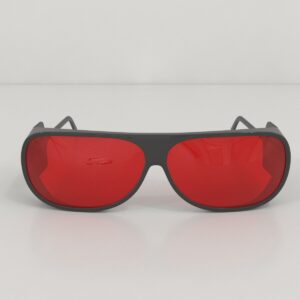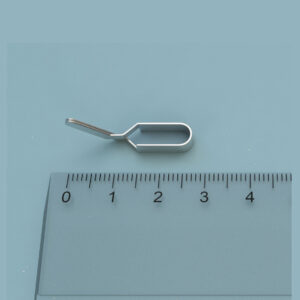$1,490.00
Mirror tests are widely employed in research on aggressive behaviors, particularly in fish aggression studies. These tests are advantageous because they necessitate fewer subjects and eliminate the risk of pseudo-replication. Additionally, mirrors elicit a robust aggressive reaction from the subjects without posing any threat to them. MazeEngineers provides various models of the mirror biting test, as there is no universally accepted standard in the existing literature.

MazeEngineers empowers preclinical neuroscience research with meticulously designed, customizable behavioral apparatuses. From manual classic mazes to fully automated smart systems, we provide the tools scientists need to capture high-quality, reproducible data for studies on learning, memory, anxiety, and depression.

bool(false)



Mirror tests are a commonly used method for studying agonistic interactions, particularly in research on fish aggression. These tests are advantageous because they require fewer subjects and prevent pseudo-replication. The presence of mirrors induces a strong, aggressive reaction in the subjects without putting them at risk. Additionally, mirror tests offer a straightforward approach to examining the evolution of mutual cooperation, information exchange during agonistic encounters, and the role of lateralization. The bite test reveals that zebrafish exhibit a lateral display bias towards their right side, using their right eye (Miklosi and Andrew, 1999). This test is useful for investigating the importance of lateral displays when facing a real opponent compared to a mirror.
Elwood’s mirror test apparatus consists of two identical holding tanks for individual fish, separated by a removable grey opaque partition. This partition visually isolates the fish (convict cichlids) from one another. It can be removed to reveal a real opponent or replaced with a mirror.
The tanks, measuring 30 x 20 x 20 cm, function both as holding tanks and experimental setups. A grey opaque divider is used to visually separate the subjects within the tanks. For experiments involving a mirror, this divider is swapped out for a 20 x 20 cm mirror. Using individual tanks addresses ethical concerns by eliminating the need to transfer subjects between test sessions, thereby minimizing the risk of physical harm.
The subjects are housed individually in their tanks, which are aligned end to end and separated by a grey opaque visual divider. Each tank may be lined with gravel to a depth of about 2 cm. Subjects are kept in a 12:12 hour light/dark cycle with 15 cm of aerated water, maintained at a temperature of approximately 27°C. They are fed every other day and after observations on the day of experimentation. Subjects are isolated for 1 to 2 weeks prior to experimentation. The experiments are conducted in a disturbance-free environment and recorded using the automated video tracking system, Noldus Ethovision XT.
The subjects are tested under two conditions: one where the focal subject faces a real opponent, and another where a mirror replaces the opponent to observe individual and lateral displays (Elwood et al., 2014). Each subject undergoes the experiment twice without pseudo-replication, with a 10-15 minute interval between tests.
For the real opponent observation, the focal subject is exposed to a stimulus subject on the right side by removing the opaque divider, and observations are made for 30 minutes. For the mirror-based experiment, the divider is removed and immediately replaced with a mirror.
During the experiments, the activities of the focal subjects were recorded for right lateral displays, left lateral displays, and frontal displays. A right lateral display was noted when the subject oriented its right side at an angle of 45 degrees or less to the glass at the end of the tank nearest to the mirror or opponent. Conversely, a left lateral display was recorded when the subject presented its left side. A frontal display was documented when the subject faced the glass head-on, at an angle greater than 45 degrees. Data were collected on the frequency and duration of each display type.
The analysis indicated that interactions with real opponents resulted in more frequent displays and a longer total duration of displays compared to interactions with a mirror.
Mirror biting tests are advantageous because they don’t necessitate a large sample size, as each subject serves as its own focal point. Ethical and welfare concerns are minimized since the holding tanks double as the experimental setup. These tests offer a simple, straightforward, and cost-effective approach to studying agonistic encounters in fish.
While the mirror biting test provides insights into lateral displays and contest interactions, its effectiveness is questionable. This is because the behaviors induced by mirrors do not accurately replicate those driven by interactions with conspecifics, nor do they elicit the same physiological responses.
There are no questions yet. Be the first to ask a question about this product.